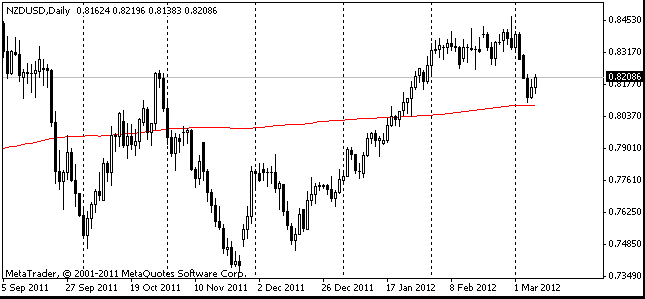EUR/usd
Bernanke said everything that was necessary to inspire confidence in the markets. At times it is very difficult to understand whether he got into the markets' trap ( as just a day before he delivered his speech the markets had suffered the sharpest decline in the last few months) or really remains ultra-dovish, though his policy is somewhat warped in some markets. So, Ben Bernanke, delivering a semiannual testimony before the Senate Banking Committee, pointed out the necessity to preserve the stimulating course of the monetary policy. It dispelled the fears which arose after the fomc's meeting minutes in January. The stock exchanges performed something like a retracement – growth by 0.6% after the 2% decline. It is remarkable that the currency market showed almost no reaction to that, except for a pause in decline of the euro. eurusd is hovering around 1.3050 within the range of about 40 pips. It looks like consolidation before another attack of the bears. As has already been mentioned, the US stock market is too crammed with the Fed's easy money. Normally growth of the index to the five-year highs and its appreciation by 6% in less than two months would be regarded as the first sign of the healthy economy. The second sign is usually seen in the housing market. And here we can see a good progress. New home sales in January flew up by 15.6% m/m and by 29% y/y. And in nominal terms they are now showing the rate which hasn't been observed for the last 4.5 year. Also we should take into account a sharp decrease in the ratio of unsold inventories to the purchase rate in the existing homes market . The housing market signals that it is overheated, which in its turn means that in the near term America will face with price growth in this sector. Anyway, the Fed promises to keep the rates low and extend its balance sheet for more than a year, thus curbing growth of the market interest rates.

GBP/USD
The sterling seemed to be brisker on Monday and Tuesday morning, but then again went under the market pressure. Now it is again at 1.51, close to the multiyear low. Now it looks as if the only thing that can keep the sterling afloat was Europe's (Italy's, Greece's, Cyprus's etc) troubles. It was them which supported the sterling, bringing investors back to it. Apparently we shouldn't expect any support from the British politicians. The Monetary Policy Committee members one after another point out that the pound's decline is quite reasonable and consequently intend to further pursue the soft policy.

USD/JPY
The Japanese yen is no longer a whipping boy. usdjpy is now trading below 92.0. Yet, we can also see consolidation within the triangle with the midpoint at 91.70. There is a feeling that it is not the end of retracement in the pair. Quite likely, traders will try to push it down to 90.

NZD/USD
The New Zealand dollar was swiftly declining last week and this week it's doing it even faster. After the retracement of 0.8310-0.8410 since Tuesday NZD has been suffering massive sales, which have pushed NSDUSD as low as its yearly low at 0.8244. The pair has been above its 200-day MA (now at 0.8140) for four months in a row, though for the last two months it's been trading flat. Quite likely, in the coming week or two we will see how the actual price will hit this MA at 0.8160.
